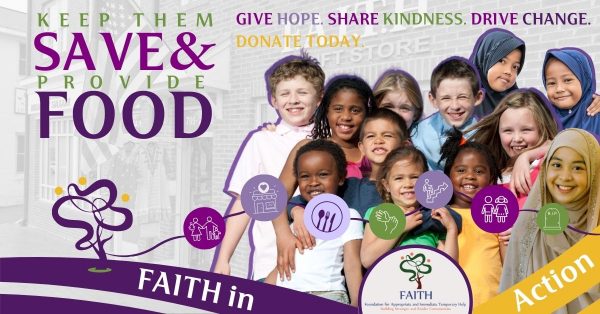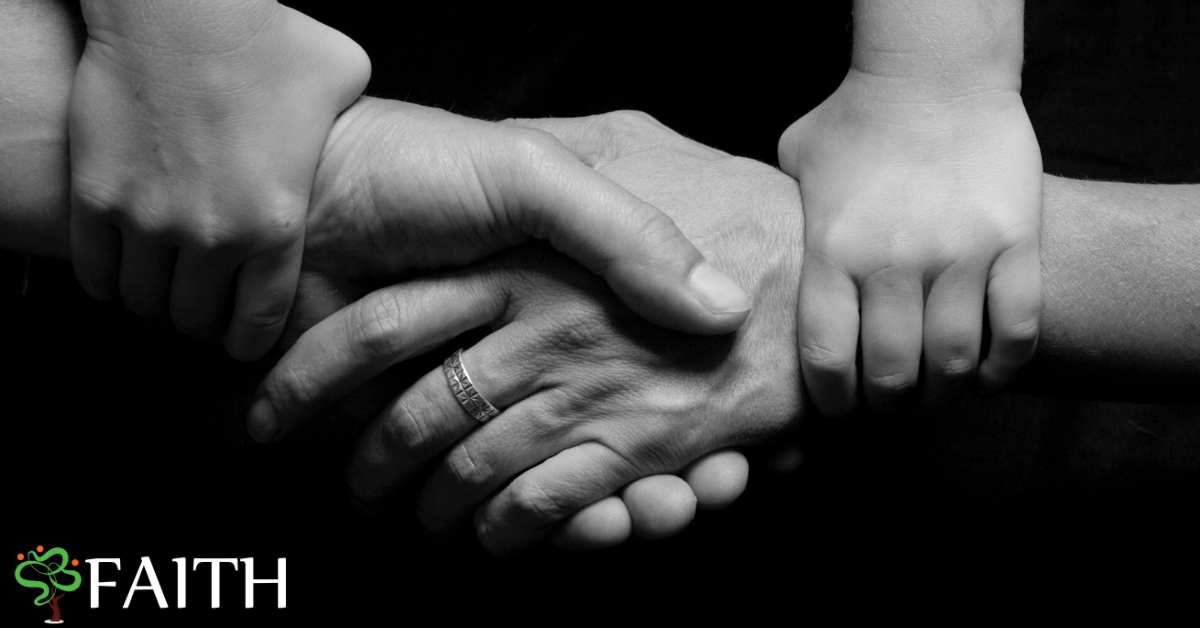10 Tips to Donating to Charity in Virginia
Virginia is known to have the wealthiest counties. Most especially those near Washington DC. This is where a highly-sophisticated cosmopolitan environment exists. These include urban centers , government buildings, and modern cityscapes.
Yet, in some of the state’s far-flung areas, there exist the poorest of counties, with the underprivileged suffering under dire economic situations.
Over the years , the Foundation For Appropriate And Immediate Temporary Help (FAITH) , one of Virginia’s leading non-profit organizations, has been at the forefront of nonprofit activities, spearheading volunteer work and the creation of donation programs to benefit those in need based in Virginia.
With its ongoing donation drives, FAITH seeks support from people who are available and willing to extend their helping hand for those in need.
FAITH manages its funds from its donation programs with utmost diligence and conducts annual financial audits. One hundred percent of these donations directly benefit less privileged children, families and communities in Virginia
FAITH gives these tips on how to provide donations to charity in Virginia.
1.Donate in established charity organizations
Established disaster-relief organizations are the best choices for getting aid to victims quickly. Despite their best efforts, newcomers may face difficulties. When disasters happen, disaster relief agencies are dispatched to the affected areas.
These groups usually collaborate with local authorities to identify and prioritize humanitarian needs such as rescuing and treating victims, giving temporary housing, serving hot meals, offering trauma therapy, and distributing hygiene kits. Many disaster relief organizations remain on the scene during the emergency response, recovery, and mitigation stages.
2. Send clothing donations and other gifts
The number of people who benefit from clothing donations is one of the most compelling reasons to do so. It assists individuals who cannot afford clothing, catastrophe victims, veterans, and even those suffering from illnesses. You are assisting a wide range of individuals in need when you contribute to a charity that not only takes the clothes to a thrift shop but also converts the clothing contribution into a monetary donation.
When you focus on all of the different individuals who benefit from your gifts, it’s a simple approach to demonstrate the power of kindness and giving. As kids become older and outgrow their clothing, highlight the necessity of donating them to someone who may need them more.
In light of the pandemic, a significant population of families have been greatly affected and continuously struggling. Due to certain factors such as unemployment, and other economic-risk factors, FAITH continues to create bounties of kindness and generosity towards the less fortunate.
3. Compliance with the Charity Transparency Standards
A diversion of assets – any improper conversion or use of an organization’s assets for reasons other than those permitted by the institution, such as misappropriation of funds or theft – can also cast doubt on a charity’s fiscal independence.
Check the charity organization’s previous reports to determine if it has disclosed any asset diversion. Donors may be hesitant to give to a charity if their name, address, or other personal information is shared or sold, resulting in a flood of philanthropic solicitations from competing groups.
4. Establish a crowdsourcing campaign
Giving to someone you know and trust is the safest option. Keep in mind that some crowdfunding platforms do a cursory examination. Examine the platform’s policies on fees and contribution distribution as well. Crowdfunding is when a corporation, an organization, or a person raises money for a project without using traditional methods, using modest donations from a population of people. These businesses can get off the ground or start new projects by acquiring essential working capital assistance. The majority of these campaigns take advantage of information, have specified deadlines for raising funds, and declare precise financial targets.
5. Beware of fraud cases and fabrication of overstated claims
The human spirit does not falter when tragedy hits. Friends and coworkers combine their resources to donate to a cause, and millions of others willingly commit money online.
Because of the Internet’s capabilities, operations like crowdfunding and other relief-related efforts have a stronger platform for making people aware and reaching a global audience.
Online social networking tools, in particular, have been essential in mobilizing support for many causes.
However, fraudulent transactions can easily happen amidst these activities as well.
While fraud tactics may appear horrible to us, hackers consider it as just another day at the office. Scammers will take advantage of every chance to steal money from consumers, and they know that schemes are easier to carry off when prospective contributors’ emotions are involved.
6. Be wary of groups having similar identities to trustworthy, well-known charities.
According to the Giving USA Foundation’s annual report on generosity, Americans gave more than $471 billion to charity in 2020.
This generosity supports a plethora of organizations that place those fortunes to good use in the areas of health care, education, environmental preservation, the arts, and a variety of other purposes. However, it also allows con artists to take advantage of people’s generosity in order to enrich themselves.
Several of these fraudsters claim to be soliciting donations for military personnel or disaster relief. Swindlers are well conscious of our desire to start our emotions and finances to veterans and individuals who are reconstructing their lives after storms, tragedies, or wildfires. During the Christmas season, when the majority of donations are made, charity scammers are constantly involved.
7. Do not open attachments or follow links from unknown.
Donations are solicited for groups that conduct little or no work, but the funds are instead directed to the false charity’s originator. These frauds can occur at any time, but they are most common following high-profile tragedies. Criminals frequently take advantage of catastrophes in order to take advantage of you and those who wish to assist.
Charity fraud schemes can manifest itself in a variety of ways, including emails, online posts, crowdfunding sites, cold calls, and so forth. When it comes to donating to charitable groups, always be cautious and do your homework.
After a natural disaster or other incident, unscrupulous tradesmen and other scam artists may commit fraudulent transactions, re-victimizing people whose homes or businesses have been destroyed. They may even pretend to be connected to the government when they are not.
8. Avoid responding to suspicious email
It is imperative not to give out personal information to somebody you don’t know, to make sure the information you give out will not be used to steal your identity. Hackers and identity thieves are always on the lookout for ways to intercept internet transactions.
One of the ways to be sure you’re purchasing on a secure website would be to check the URL. HTTPS encrypts sensitive data such as payment card passwords and user information before it is delivered to the server.
Never put your reliance on contact information given to you directly by a caller. Scammers frequently replicate a legitimate charity’s name, phone number, website, or materials.
The majority of charity websites finish in.org rather than.com. Web addresses that terminate in a string of digits should be avoided. With this helpful information serving as your guide, it would be best to conduct your own research
9. Use a cheque or a direct debit to make a donation.
Many charities enlist the assistance of fundraising groups or other organizations to assist them in generating funds. While this isn’t strictly a scam, you should be aware 0that a portion of your money will almost certainly be utilized for administrative or other expenses.
10. Making Sure Your Donations Reach The Beneficiaries
Today’s charities are supported by government agreements, charitable organizations, grant makers, and social investors, in addition to the aforementioned community.
A whole environment of stakeholders, including volunteer groups, benefactors, and members, provides critical information and encouragement to organizations in addition to revenue. With each of these stakeholders wanting greater responsibility and outcome, the pressure on charities to demonstrate their influence is greater than ever.
Before you donate, find out how much of your money will actually get to charity. Always keep track of when you gave, who you gave to, and how much you provided. If you keep track of your donations, you’ll be more aware of scammers that say you’ve previously given when you have not.
How Your Donation Helps
FAITH helps low-income people get the immediate and temporary help they need to get through a negative experience or period in their life. Families and children experiencing unfortunate economic situations are the beneficiaries of FAITH’s programs , which provide them with resources empowering them back to self-sufficiency, self-respect and dignity,.
What You Can Donate
Old products, appliances, office equipment, and other items are extremely useful in our business. Although we encourage you to contribute in your presence, we will gladly send you a statement.
How You Can Donate
A Variety of Giving Tools
- Individuals and businesses can donate new and slightly used appliances, furniture, building materials, household products, and more to various donation campaigns.
- Willingness to donate your time is one of the most effective ways to support a good cause.
- FAITH caters to families who are in dire need to sustain their food and alleviate their hunger. If you don’t possess the means and access to volunteer, you may even participate in charitable events or collect money from family members and friends.
- Securities, life insurance policies, annuities, business and investment interests, and other assets such as stocks, bonds, mutual funds, and retirement plans are all welcome at FAITH in Northern Virginia.
Planned Gifts
- Structured donations, such as corporate entities, provident fund, annuities, and scheduled contribution accounts, are accepted by FAITH.
- Offering clusters and communal stewardship funds allow members of society to come out and support FAITH and its component funds’ activities.
FAITH’s Family Giving Program
FAITH has a Family Giving Program that includes a Family Foundation, Family Giving Circle, and a Donor Portal.
A Family Giving Program is an individual fund or gift made to the Community Foundation for Northern Virginia that is designated to provide you with a tax benefit for a specific charitable activity. A Family Giving Program may be established at any time and may be established by one or all family members.
A contribution is a financial donation made to the community foundation with the intention of supporting a particular course. Make your check directly to the Community Foundation for Northern Virginia, and in the remark area, write the name of the fund you’d like to support. Send your reservation to the Community Foundation for Northern Virginia.






